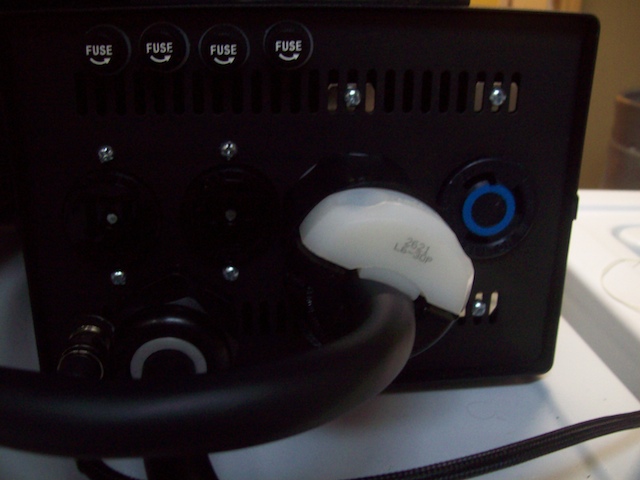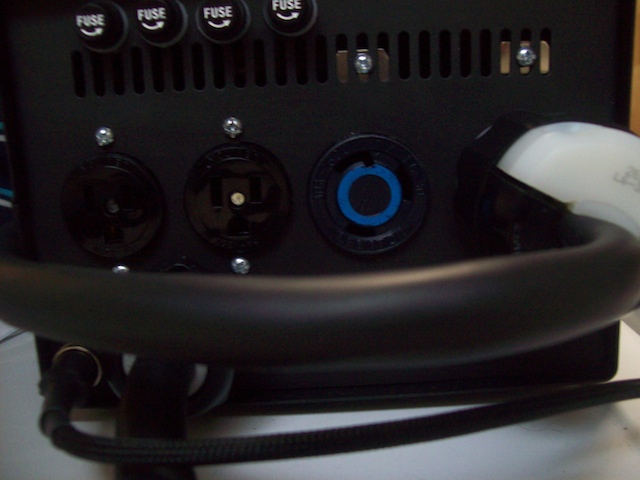AdamCanFly
Well-Known Member
That looks AWESOME! I'm going to attempt the exact same thing! I may end up going with a tool box so I have a little more room. Would it be ok to use a plastic tool box?

That looks AWESOME! I'm going to attempt the exact same thing! I may end up going with a tool box so I have a little more room. Would it be ok to use a plastic tool box?
I absolutely believe it is critical that your brewery be protected with GFCI power. You are dealing with electricity in a wet environment and your life will depend on it. Do NOT take a risk with this.Do you have to have GFCI?
If so, my current plan was to tap into my dryer run which is on the same side of the house as my brewery. That being asid, I highly doubt that I have a GFCI breaker installed in my main panel. If I was to use GFCI do I need to run cable from my panel which is on the other side of the house, or can I still tap into the Dryer circuit?






I've been researching different electric builds for a while and this design is exactly what I'm looking for. My Father in-law used to be an electrician so he is going to help me get a new circuit setup with a GFCI for this. I think i'm going to use the second design with two indicator lights except without the timer.
I noticed you only have one RTD input, do you move the probe cable between the two vessels?
If I used that same box could I fit the SSR heatsink inside?
Looking at the diagram the only other thing that I was unsure of are the terminal strips. This may be a dumb question but how do these work? I thought it connected the two connections across from each other. I also see that there are four on the diagram and only 3 on your build, but larger ones.
Thanks.
...
I was thinking about this build more and thought that I might want to someday use it with HERMS. It seems it would be easier to build a panel that could support HERMS rather than build a new one later. Right now i have 2 keggles and a cooler for the MLT but someday would like to upgrade. From what I can see the only thing i would need to use this for HERMS would be a second PID and RTD to monitor the temp in the MLT and turn on the pump when needed, plus any components to support this. Is there anything else that I would need or would these additions make this work for a HERMS?
Jsguitar's diagram in post # 21 of this thread is also set up for use as a HERMS system. You need a pump (or 2) and a HERMS coil that would be placed in the HLT. You monitor the HLT temperature and recirculate the MASH water through the coil. It really is all the same and you only need a single PID to accomplish it.
Hope this helps.

Thanks.Wouldn't you want to monitor the MLT temp as well and have the PID turn on the pump when needed though? I suppose you could monitor the mash temp with an external thermometer and manually turn on the pump when needed but wouldn't it be easier to have that part automated?
BTW P-J your diagrams are awesome, thanks for all your hard work it really makes it easy for us noobs!

You are very welcome.Thanks P-J this helps! Right now i'm using a cooler so I know this isn't needed but I'm thinking about replacing it with a kettle and wanted to have the option to use HERMS in that case.
I was looking at Kal's MLT and like how he measures the temp of the wort leaving the kettle. It doesn't control anything but just gives you a better indication of the temp than just the HLT temp.
Thanks for your help, I think i'm going to start putting together a part list and get moving on my electric brewery build!
I'm thinking this build needs to be compressed into a single post and put in the project locator. We could put a parts list with links to vendor websites on there as well.

The Bus Bar's look like a good idea. If i used 3 of those and a bolt for ground does the order that I connect the components to the bus bars matter?
Sorry I missed this. No, the order doesn't matter so long as black connects to black ect.
I have some extra connectors and stuff if anyone following this is definitely going to build this. Just pm me. I'd be glad to help.
Do you have enough flex braid and stainless cable for a whole rtd cable? If so I'd be interested in that. I'm going to do an indicator light so I don't need that switch.
JS, I'll take what you've got to offer, I've got some of the core componants, but am still missing the preferials (wiring, connectors, etc) and am still sourcing some of the others (Contactors, SSR, etc) have the PID, and some, but not all the switches I need/want. PM me with what you need to ship to 53589 and if you need something for the parts themselves.
Ok, Zacc just slipped a pm in front of you too. Let me do this. I'll figure out exactly what I have and I'll pm you guys (mavrick,Adam, and Zacc) with what I can send you.
All of this stuff is small and light so shipping shouldn't cost much. I doubt it'd be more than a few bucks for everything. I don't want anything for the parts except this:
If you use this stuff for your build, you must start a thread and post alot of pictures!
BTW, since Adam expressed interest in the flex braid, I'll wait to hear if he wants that first, then I already told Zacc he could have it if Adam doesn't want it. I have enough of that stainless cord for all of you guys I think. I need to double check how much is on there. I also have some extra O rings if your mounting the elements ala Kal's method, but I need to leave a couple extra for myself, so I'll see what I have if you need those too.
BTW mavrick, what are you building exactly?
Ok. I hope you are ready for this as it becomes a little more complicated. BTW, I totally agree that an indicator light is needed to ensure some additional level of comfort with the system. The lamp will indicate if the switch is powering either element circuit.
The double pole - double throw - center off - switch needs to be changed out to a - Triple Pole - Double Throw - Center Off - switch in order to accommodate the indicator lamp.
Mouser PN 633-S33-RO (click it).
The indicator lamp shown is this one from
grainger.com PN 1XWL6 (click it). {BTW - the lamp is actually Amber in color. If you want a green one it's pn 1XWL4. Red is pn 1XWL1}
Now the new diagram (click on the image for a full scale drawing printable on tabloid paper 11" x 17")

Where else are you going to get a custom diagram.
I really enjoy the mind jumps I go through to come up with the plans.
I sure hope this helps you.
Best regards,
P-J
This is pretty much the control panel I want to build (but I have to redo the kitchen first). The only thing I might want to do is add a second probe for the BK. I like the idea of being able to set the PID to 208 and not having to watch it as it approaches boiling.
Thanks.
I pretty much built a very close version of this a year ago. you don't need 2 probes just switch the probe from the mlt to hlt to the bk. you will be heating them all up at different times of your brew session anyway.
Here's a final wiring shot I forgot to add. I added a ground wire to the top of the box and put a big piece of heat shrink on the wires going to the top to better protect the wires when opening.

Zookeeper, you may be better off with a bigger box but I didn't plan very well to tell you truth. If I were to do it again, I wouldn't have used the three terminal strips the way I did. You could use smaller terminal strips, or combine say the neutral and a hot line on one terminal strip being careful to keep them isolated-- there's not much on the neutral and the red hot line, or use bus bars for the hots and neutral like these to save some space:
http://www.westmarine.com/webapp/wcs/stores/servlet/ProductDisplay?productId=17421&catalogId=10001&langId=-1&storeId=11151&storeNum=10109&subdeptNum=10598&classNum=10602
The timer is the main space hog. The other stuff wouldn't be an issue I don't think.

I'll continue to strategize as I drink this saison.

Enter your email address to join: